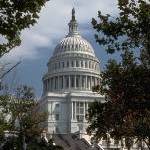 The first quarter of 2019 is over and done. But before we say good riddance. Some reflection is in order. To this we offer two discrete metrics. Gross domestic product and government debt.
The first quarter of 2019 is over and done. But before we say good riddance. Some reflection is in order. To this we offer two discrete metrics. Gross domestic product and government debt.
GDP for the quarter, as estimated by the March 29 update to the New York Fed’s GDP Nowcast, grew at an annualized rate of 1.3 percent. For perspective, annualized GDP growth of 1.3 percent is akin to getting a 1.3 percent annual raise. Ask any working stiff, and they’ll tell you…a 1.3 percent raise is effectively nothing.
By comparison, the U.S. budget deficit for fiscal year 2019 is estimated to hit roughly $1.1 trillion. This amounts to an approximate 5 percent increase of the current $22.2 trillion national debt. In other words, government debt is increasing about 3.85 times faster than nominal GDP, which is about $21 trillion.
These two metrics offer a rough perspective on the state of the economy. Deficit spending is grossly outpacing economic growth. Heavy treatments of fiscal stimulus are being applied. Yet the economy’s practically running in place. In short, the state of the economy is not well.
And as the economy slows and then slips into reverse later this year, and as Washington then applies more fiscal stimulus, these two metrics will move even further towards madness. What’s more, the Fed is gearing up to promote this greater state of madness in any and every way possible…
Indefinite Madness
The Fed confirmed during the first quarter something all honest thinkers have known for about a decade. There really is no viable way to dispose of the government bonds and mortgage securities purchased with the trillions of dollars of fake money conjured into existence as part of quantitative easing. We’re stuck in this state of madness indefinitely – there’s no going back.
The Fed’s balance sheet will never be materially reduced. Quantitative tightening will conclude this year with the balance sheet well over 3.5 times higher than it was a decade ago. The federal funds rate will never be materially normalized. Financial markets, governments, corporations, industries, individuals, and everything in between, depend on the grease and lard to remain solvent.
Since December, the Fed’s priority has shifted from normalization to maintaining an elevated stock market. Moreover, when the economy, now close to its longest, yet most anemic expansion in the post-World War II era, rolls over, you can expect the Fed will reintroduce its policies of mass money debasement.
The difference between now and 2008, however, is the Fed will be easing from a place that’s already highly accommodative. Remember, prior to the 2008-09 recession, the federal funds rate was at 5.25 percent and the Fed’s balance sheet was at $900 billion. Now the federal funds rate is currently close to 2.5 percent and Fed’s balance sheet is about $3.9 trillion.
Heading into the next recession the Fed has much less room to maneuver from. Future quantitative easing could take the Fed’s balance sheet to $10 trillion or more. Plus, with the federal funds rate at just 2.5 percent, the Fed will have to push rates below zero – or negative – to bailout financial markets.
This, no doubt, will take an economy and financial markets that are already extremely distorted and disfigure them beyond all recognition. But that’s not all. The Fed will also move to direct asset purchases. Quantitative easing will likely be expanded to include purchases of corporate debt and the U.S. stock market.
As the Madness Turns
This is the mad world we live in. A world that will only get madder as policies of desperation are rolled out in earnest to keep the price of money cheap, the price of assets high, and the government swindlers in Washington flush with money borrowed on the backs of the unborn. But make no mistake, this madness will turn. First it will turn to fear, then to anger, and then to death…
The crisis coming down the turnpike will collide with a combustible populace that’s grown sick and tired of having its nose rubbed in the mud. The booming economy reported by the government bureaus over the decade long expansion never showed up in their biweekly paychecks. The fruits of their labors were consumed by Washington long before they blossomed.
To be clear, the failures of the American worker are not failures of capitalism. They’re failures of America’s brand of a centrally planned economy. The dual impediments of fake money and regulatory insanity apply exactions which cannot be overcome.
The economy, in other words, has been tilted on end. The value that workers produce flows to Washington and Wall Street, where it’s misallocated to an army of officials, cronies, and big bankers. While the mechanics of how this all works are not well understood by the masses. The bitterness that comes with schlepping and slogging to little avail can be articulated by just about everyone.
Alas, solutions, which will be in the form of various promises of free money, will exacerbate problems of too much money. Scapegoats will be misassigned. Demigods will be swept to power. And Mark Zuckerberg – that Facebook geek – will do his part to make tomorrow even less agreeable than today.
Sincerely,
MN Gordon
for Economic Prism




